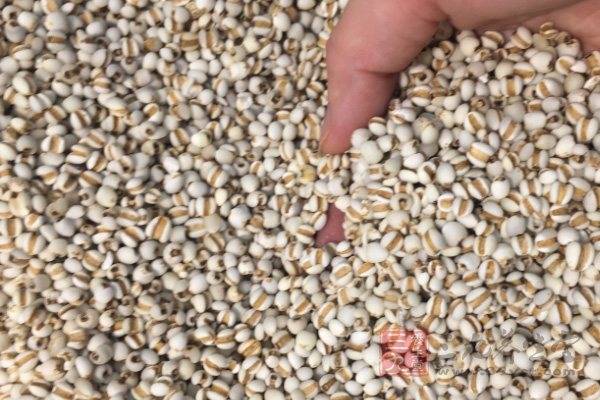If you often feel dizzy, weak all over; if you often experience constipation, and are sensitive to cold, then it is likely that there is too much dampness in your body. Dampness is the root of many illnesses, and it is hard to eliminate. This is why many people choose methods like cupping therapy and steam therapy to expel dampness. However, dietary therapy is a simple and safe method as well. Today, we will introduce several common foods that help eliminate dampness.
What can you eat to eliminate dampness in the body?
Coix seed: Coix seed has a sweet taste, cool nature, and it enters the spleen meridian. It is effective for strengthening the spleen, stopping diarrhea, and draining dampness. It is especially suitable for people with short, red urine and spleen deficiency. However, there is a technique to how coix seed should be consumed. Due to its cool nature, it is not suitable to be eaten alone. It can be cooked with warm-natured foods like making soup or porridge, which enhances its damp-removing effect.
Winter melon: Winter melon has a sweet taste, cool nature, and its remarkable effect lies in reducing swelling and promoting urination. It is the best dietary therapy for eliminating dampness and treating edema. Drinking winter melon soup is an excellent choice, but remember not to peel the winter melon as the nutrients in the peel are as good as the flesh!
Euryale seed: In traditional Chinese medicine, euryale seed has a sweet, astringent, and neutral nature. It can enter the spleen and kidney meridians, expel dampness, strengthen the spleen, nourish the kidneys, and stop diarrhea. It is a rare gem for eliminating dampness. However, whether eaten raw or cooked, euryale seed should not be consumed excessively at one time to avoid digestive issues.
Corn: Corn can promote diuresis, clear turbidity, stimulate appetite, and benefit qi circulation. It has a good regulatory effect on conditions like heavy dampness in the body or edema due to chronic nephritis. Therefore, consuming corn regularly is an excellent choice for expelling dampness, and don’t overlook using corn silk as it is also beneficial.
Lily bulb: Lily bulb can dispel damp-heat, moisturize the lungs, and relieve cough. Drinking lily bulb-infused water or consuming it powdered can help eliminate dampness and dryness, with remarkable health benefits.
What should you pay attention to in daily diet?
Internal dampness is closely related to the health of the gastrointestinal tract and digestive functions, affecting the metabolism of nutrients and water in the body. Therefore, it is essential to have a balanced diet, reduce consumption of oily, sweet, and cold foods to prevent stagnation in the digestive system, which can worsen internal dampness.
Recommended damp-expelling recipes
Coix seed and red bean porridge: Soak coix seed and red beans in advance for a day. Then, cook the soaked red beans and coix seeds in a pot with water. Bring it to a boil over high heat, then add red dates, glutinous rice balls, goji berries, longan, according to personal taste. Simmer over low heat until the red beans and coix seeds are cooked, then serve.
Lily bulb and coix seed porridge: Soak the coix seed for an hour in advance. Then, cook the coix seeds, lily bulbs, and glutinous rice in a pot with water until soft, add the lily bulbs, continue cooking, and before removing from heat, add a small amount of rock sugar.
The above introduces some foods with good damp-expelling effects, we hope that those with excessive internal dampness can eat them in moderation for adjunctive therapy, and believe that adhering to this diet for a period of time will have a great damp-expelling and health-promoting effect.
If you want to learn more interesting and practical health knowledge, click the link below to follow us~


